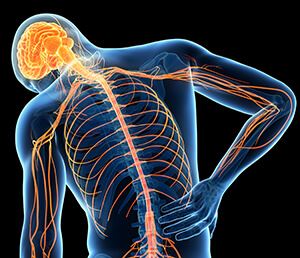What is pain?
As chronic pain rates continue to rise, more research has occurred to help with the growing problem. Research within the past 10 years along with advances in technology have helped us understand and assist people in chronic pain.
It was believed a pain response happened as an input to the spinal cord which traveled via nerves to the brain. The brain then sends out “pain messages.”
We now know pain is an output of the brain, which is not a passive recipient of information, however, can make a pain experience.
Research has found that there often are many factors which contribute to chronic pain. A patient who is experiencing chronic pain for many years may not have ongoing tissue injury with nerves sending messages to the brain. The nervous system (which contains over 400 individual nerves, totaling over 45 miles) functions as an alarm to alert us when we have an injury and remains on after the danger (injury) has subsided. Studies tell us 25 percent of Americans have an alarm and nervous system in a state of alertness which contributes to ongoing pain, which is real pain.
With a greater understanding of what can be contributing to a chronic pain condition, a recipe can be made to assist each patient understand his/her pain and have a higher quality of life. This can be accomplished through a team of health care professionals working together to achieve relief.
So, the answer to the above question of what is pain — pain is unique to each person, think of pain as defender and not an offender.
